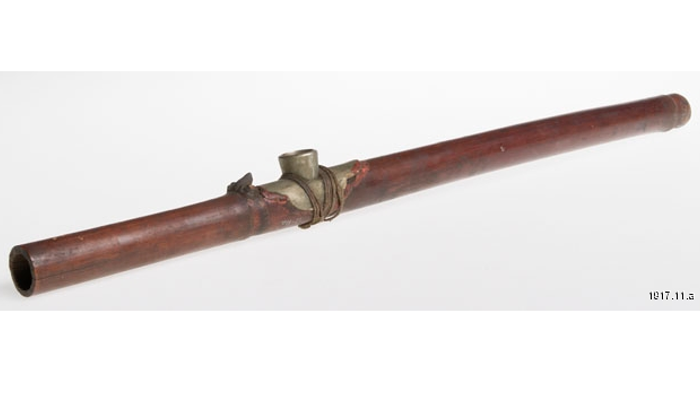
Opium on the Clyde
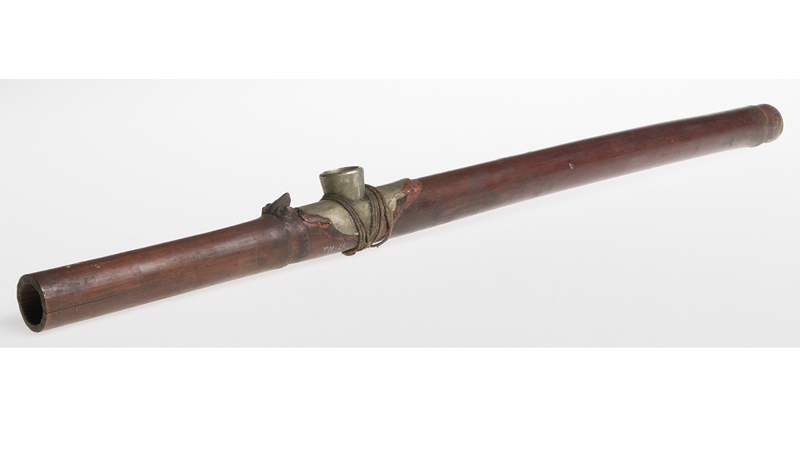
Opium pipe seized in a raid, 1916
1917.11.a
Images © CSG CIC Glasgow Museums Collection
20 March 2024
On 2 August 1916 the police raided a ‘shop’ in Glasgow’s dockland and seized a quantity of opium and arrested three Chinese men. The building at 226 Broomielaw, on the north bank of the Clyde close to the city centre, was being fitted out as a boarding house to accommodate Chinese seamen, who were becoming a common sight along Glasgow’s docks. Like many of these men, Chang Hop had travelled up from London, where there was a large Chinese community. Instead of joining a ship on the Clyde he took on the Broomielaw premises to meet the specific needs of the Chinese seamen passing through Glasgow, which included smoking opium.
The consumption of opium became endemic in China as a result of the Opium Wars, during which Britain enforced its idea of free trade on China to generate massive profits from the trade in opium. British merchants effectively operated as pushers to increase demand for this highly addictive drug. As a result of the Opium Wars, China was forced to cede the valuable trading port of Hong Kong to the British in 1842 and large parts of the Chinese population became opium addicts. By World War I the trade in opium had been prohibited but smuggling still continued, including through Glasgow’s docks.
Possession of opium in the UK was made illegal following an amendment to the Defence of the Realm Act at the end of July 1916. This was because opium and morphine were in short supply and desperately needed to treat casualties in World War I. Following the raid on his premises, Chang Hop pleaded guilty, but given the short period of time between the Act being passed and the offence being committed, the sheriff was lenient and only imposed a nominal fine of one pound. The opium smoking pipes and other instruments which had been confiscated during the raid, however, were forfeited to the court. These were later presented to Kelvingrove Art Gallery and Museum by the procurator fiscal, Fraser McKenna.
Opium pipes seized in 1916 and 1917

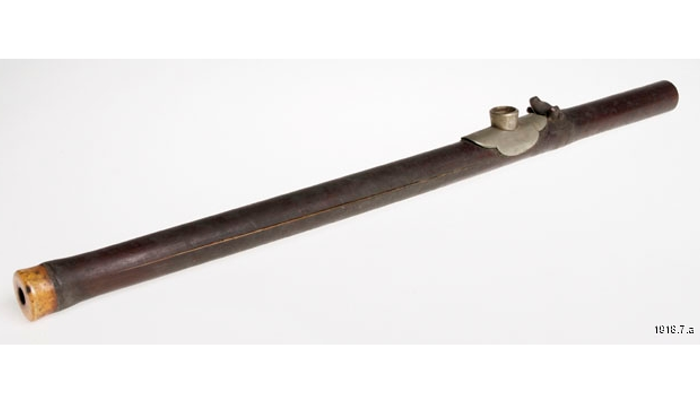
Another raid occurred at the same premises, now referred to as a boarding house and restaurant, in January 1917. Superintendent William Douglas led the raid and found around 150 kg of opium in small packets hidden under the floorboards. Six Chinese men were arrested, and Fraser McKenna again prosecuted the case. Ah Sam pleaded guilty, but as the opium was forfeited to be used for the troops in military hospitals, he was let off with a fine of £50. Superintendent Douglas later presented an opium pipe seized in the raid to the museum.
The reason that so many Chinese seamen suddenly started to find employment on British ships was because the Merchant Shipping Act of 1907, combined with other new legislation, made it much more economical to engage ‘foreign’ crews, who were paid considerably less, were allocated lower standards of accommodation and could be given poorer provisions than was stipulated for white European crews. The recent colonial expansion in Hong Kong, Singapore and Shanghai also opened the market to an increase in Chinese seafarers. Shipowners such as William Burrell were quick to seize this opportunity and Scottish and European crews were rapidly replaced by Chinese crews on many ships sailing out of the Clyde.
This created huge resentment amongst the British crews, and the National Sailors’ and Firemen’s Union led a vociferous and vehemently racist campaign against what they openly called the ‘Yellow Peril’, an anti-Asian derogatory term commonly used at the time. On Clydeside there were numerous protests and the union regularly tried to prevent Chinese crews boarding ships. In 1919 this developed into a full-scale race riot where Chinese and African sailors were attacked by a mob of enraged British seamen following a union rally. During World War I the Chinese crews were accused of spying and disrupting the war effort. Feelings were therefore running high when the opium raids happened on the Broomielaw, which led to negative reporting in the press.
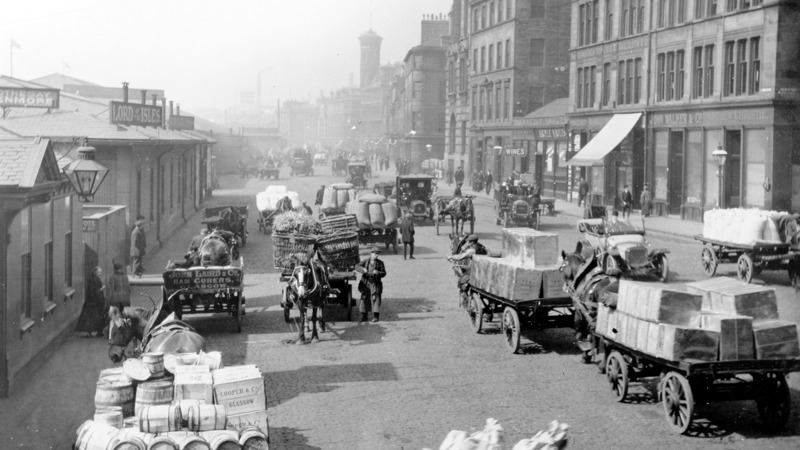
The Broomielaw in 1914
The Chinese seamen’s boarding house was beyond the Seaman’s Institute, whose round tower can be seen left of centre in the middle distance. (Glasgow City Archives, Ref: A2/3/1914/5b)
The reality was that the Chinese crews were treated appallingly on most ships. Burrell & Son had a particularly bad reputation. The Scottish officers tended to treat the Chinese crews brutally. They were subjected to harsh discipline and any misdemeanour was punished with violence. There are numerous reports of ‘mutinies’ of Chinese crews that were suppressed with gunshot and beatings. Food was so bad that several Chinese sailors on Burrell ships were hospitalised or died of beriberi, a nutritional disorder caused by a vitamin deficiency from a diet consisting mainly of white rice. Conditions were so bad that it was not unusual for Chinese seafarers to commit suicide. When the Burrell ship Strathyre left New York in July 1908 the entire Chinese crew attempted to commit suicide by jumping overboard. Most were picked up by the harbour police, but Ching Ah Sing and Lee Ah Kan, who had tied their pigtail queues together, drowned. It was no wonder that the Chinese crews sought solace in opium. Although the smuggling of opium was illegal, its consumption aboard ship was accepted and even supported by the officers who understood the negative impact of withdrawal symptoms on the efficiency of their crews.
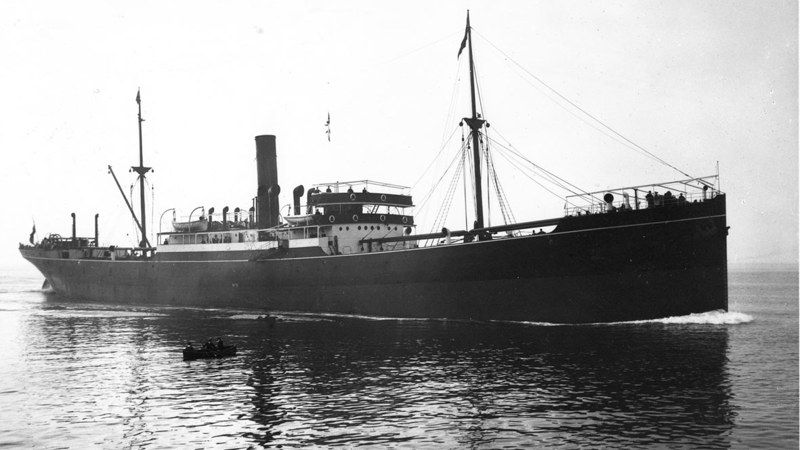
In 1911 thirteen Chinese seamen aboard the Burrell steamer Strathesk ‘mutinied’ while in New York.
They threatened to jump overboard, as the crew of another Burrell ship Strathyre had done in 1908, to face drowning rather than sail again on the ship.
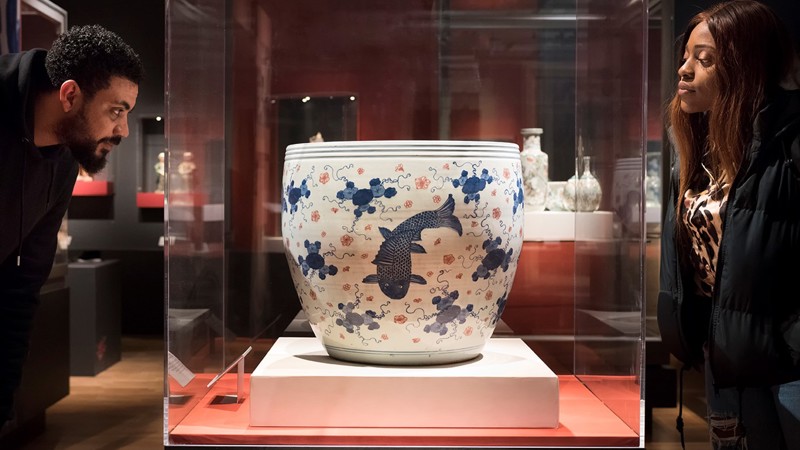
Chinese treasures at the Burrell Collection
In part, the money made by William Burrell to create his art collection came from the exploitation of Chinese seamen.
The exploitation of Chinese crews by Glasgow shipowners such as William Burrell and Leonard Gow provided them with the wealth to indulge in art collecting. Among the most fashionable objects they collected were Chinese ceramics, jade and bronzes, many of which can now be seen in Glasgow’s museum collections. They saw no contradiction in revering Chinese artistry and craftmanship while at the same time profiting from the misery of ordinary Chinese seamen.
Martin Bellamy
Research & Curatorial Manager
